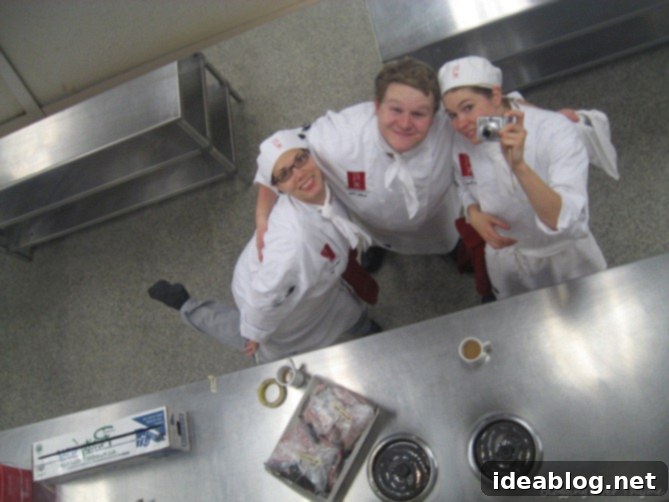Mastering Classic French Cuisine: A Culinary School Journey with Flounder Meunière and Exquisite Pithiviers
Stepping back into the bustling heart of our culinary school kitchen yesterday was an experience filled with excitement and the promise of creating truly remarkable dishes. The day’s menu was meticulously crafted, showcasing fundamental French techniques and classic preparations that I am already eager to replicate in my home kitchen. A vital piece of equipment, a good quality sautoir pan, proved indispensable. These versatile pans, essential for creating perfect pan sauces and achieving a beautiful sear, are truly cornerstones in French cooking and are used almost daily for various applications.
The Art of Preparing Flat Fish: Le Filet de Limande Meunière
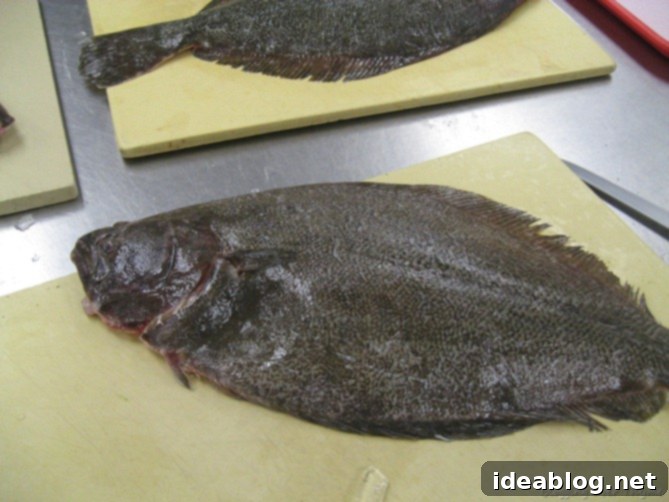
Our main course featured flat fish, specifically flounder, making its second appearance in our curriculum. This time, however, the preparation was a revelation compared to our initial encounter with poached, Hollandaise-topped fish. The challenge of filleting and skinning fish, once a daunting task, felt significantly more manageable and enjoyable on this second attempt. The satisfaction of transforming a whole fish into pristine fillets is immense, and I’m genuinely excited to visit the DC Fish Market soon to practice these newfound skills at home.
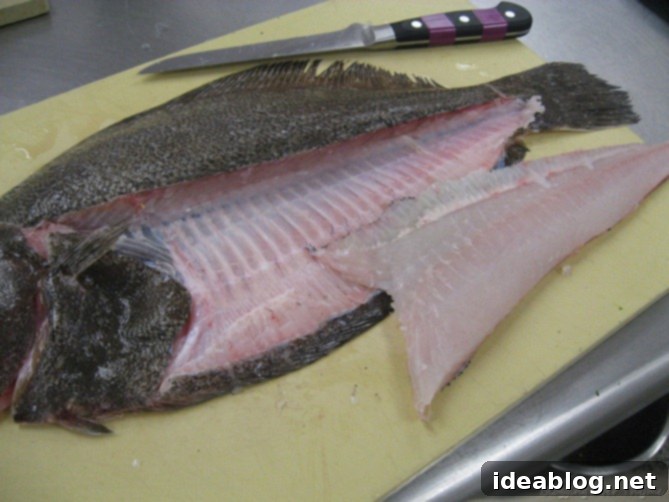
Our star dish, LE FILET DE LIMANDE MEUNIERE, is a timeless French classic that exemplifies simplicity yielding profound flavor. The process begins by lightly coating fresh fish fillets in flour, a crucial step that helps absorb excess moisture and promotes a golden, crispy crust when seared. The fillets are then swiftly seared over high heat on both sides until perfectly cooked through, but still tender and flaky. This delicate fish is traditionally served with a spoonful of rich demi-glace – a intensely reduced veal stock prepared a day in advance – offering a deep, savory counterpoint to the fish. The finishing touch is a vibrant pan sauce, expertly crafted in the very same pan used to cook the fish, capturing all the flavorful fond left behind.
This exquisite pan sauce is built upon the foundation of nutty, browned butter, which is then generously combined with an abundance of extremely finely chopped fresh parsley. The sauce is brightened and balanced with a final squeeze of lemon juice, providing a refreshing acidity that cuts through the richness. If you recall the iconic scene in Julie & Julia where she extols the virtues of this dish in a Parisian café, you’ll understand its allure. It’s a testament to how humble ingredients, when prepared with precision, can create something truly spectacular – especially with that invigorating burst of lemon.
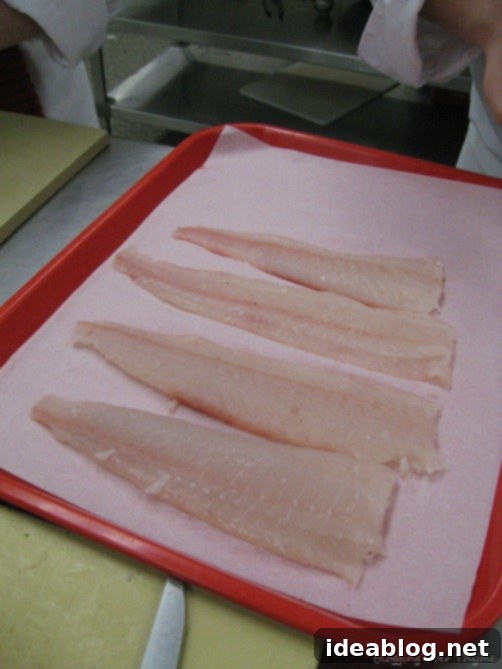
Our perfectly trimmed and skinned flounder fillets, ready for searing.
Enhancing Flavors with Demi-Glace and Lighter Options
The aforementioned veal stock, meticulously prepared in class the previous day, imparted a remarkable depth and richness to the Meunière. While an invaluable component in a professional setting, recreating homemade veal stock might be a less practical endeavor for home cooks. Our chef kindly confirmed that a similar method could be applied using chicken bones, offering a more accessible alternative without sacrificing too much flavor. Personally, I found great relief that this day’s menu, while decadent, was notably less butter-heavy than some of our previous lessons. My stomach certainly appreciated the lighter, yet equally flavorful, approach!
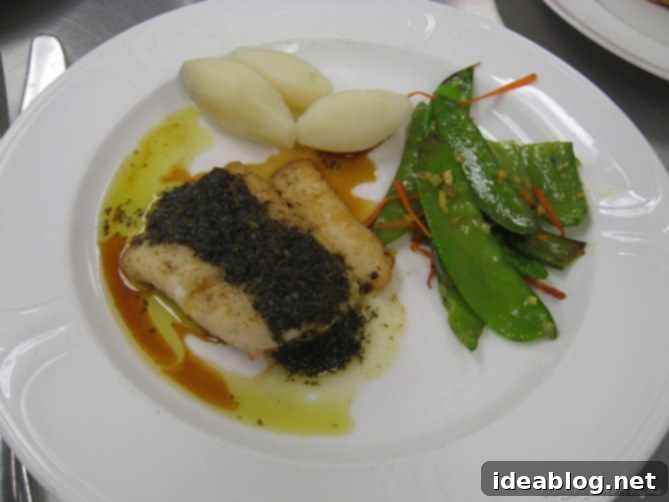
Accompaniments: Perfectly Prepared Potatoes, Snow Peas, and a Vibrant Composed Salad
To complement our delicate fish, we prepared POMMES VAPEUR – an elegant presentation of potatoes, uniformly shaped using the classic French ‘tournée’ cut, then gently cooked over steam. The process involved placing the tourned potatoes in a strainer set over simmering water within a saucepot, then covering them with a cartouche (a parchment paper lid). This steaming method is said to yield a distinct texture compared to boiling, though I admit the subtle difference was lost on my palate at the time. Nevertheless, it’s an important technique, albeit one we won’t employ daily.
Alongside the potatoes, we also crafted LES POIS MANGE-TOUT, which translates to a delightful stir-fry of snow peas. These vibrant peas were sautéed with very, very finely julienned carrots, and just a hint of aromatic garlic and shallot. Despite the somewhat tedious task of de-ribbing the snow peas, the final dish was incredibly fresh, simple, and utterly delicious, providing a crisp, green element to our meal.
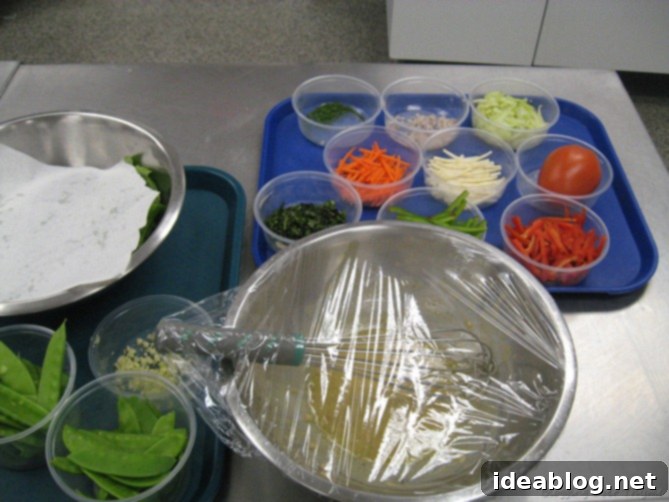
Our meticulously prepared mise en place for a beautiful composed salad.
Adding another layer of freshness and color, we served a beautifully composed salad. This culinary art form involves thoughtfully arranging individual ingredients rather than simply tossing them together. The base was a bed of tender Boston lettuce, adorned with delicate shavings of fennel. Upon this, we carefully placed finely julienned red and green bell peppers, crunchy celery root, ripe tomato slices, crisp carrot ribbons, and slender celery sticks. To complete this vibrant medley, tiny raw cauliflower florets were scattered on top, adding an intriguing texture.
Every element of the salad was dressed with a classic French vinaigrette, prepared with sherry vinegar for a nuanced tang, a touch of piquant Dijon mustard, a blend of quality olive and canola oils for emulsification, and finely minced shallots for a hint of allium flavor. The combination of textures and flavors made this salad truly memorable and a perfect accompaniment to the main course.
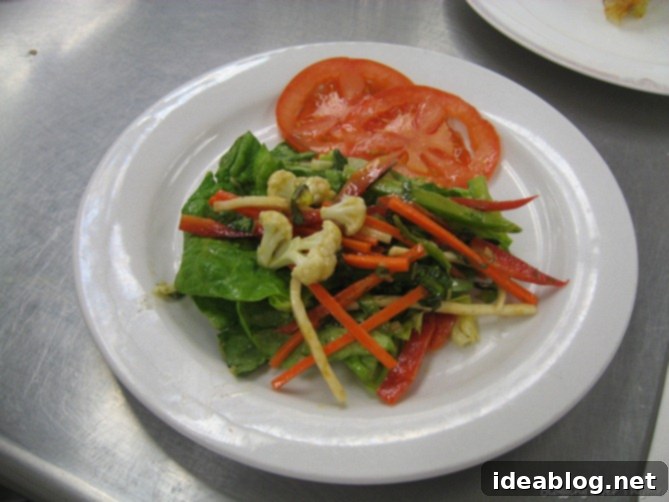
The Grand Finale: Le Pithiviers – A Showstopping French Pastry
Finally, for our pastry creation, we embarked on the making of LE PITHIVIERS. This exquisite dessert undoubtedly stole the show, commanding attention with its stunning presentation and undeniable “wow” factor. It’s a true masterpiece of French patisserie, visually captivating and incredibly rewarding to bake.
Just take a moment to admire its intricate beauty…
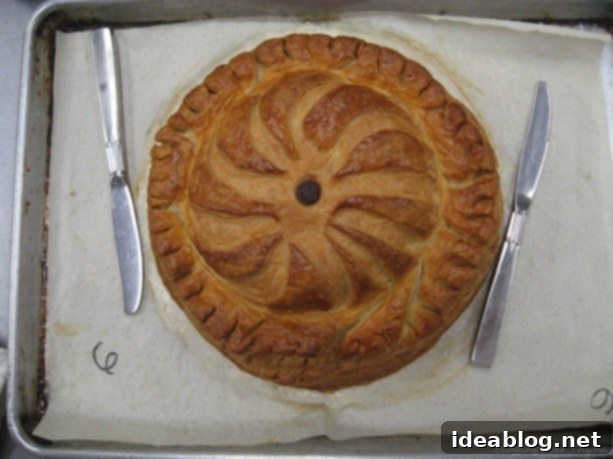
Also known affectionately as a “King’s Cake” in some traditions, the Pithiviers fundamentally consists of two glorious layers of delicate, flaky puff pastry, generously filled with luscious frangipane. Frangipane, an almond-flavored filling, is a harmonious blend of softened butter, fine powdered sugar, rich almond flour, cornstarch for structure, whole eggs, and velvety pastry cream – a truly divine combination. To elevate its aromatic profile further, we incorporated a tiny measure of rum, adding a subtle warmth to the nutty sweetness.
It’s truly astonishing to witness the transformation of this pastry. Can you believe this elaborate creation begins with such a humble appearance?
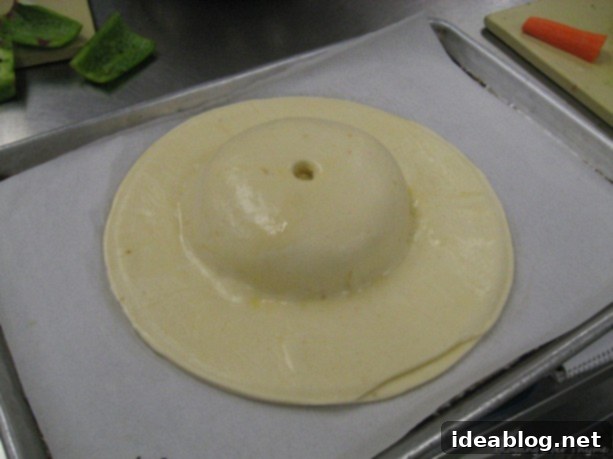
The frangipane filling, molded and chilled to achieve firmness, is carefully positioned between two meticulously rolled sheets of puff pastry. The distinctive, decorative pattern you see is then artfully etched onto the top layer using a sharp pairing knife. This step requires precision: one must cut only halfway through the puff pastry, ensuring the blade never reaches the frangipane filling, which could otherwise spill out during baking. Once baked to golden perfection, the Pithiviers is brushed with a glistening apricot glaze, imparting a beautiful shine and a hint of fruity sweetness.
The versatility and magic of puff pastry continue to astound me. As evident from our recent lessons, this foundational ingredient has graced a myriad of dishes, ranging from savory delights to sophisticated sweet treats like the Pithiviers. Its ability to create hundreds of delicate, buttery layers is a testament to the brilliance of French baking techniques.
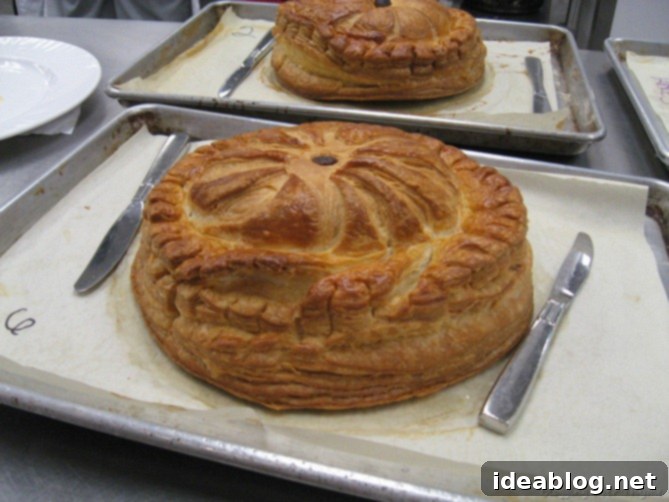
While a cross-section might appear deceptively simple, the flavor profile of the frangipane filling is anything but. Its rich, almond essence combined with the flaky pastry creates a truly delightful textural and sensory experience.
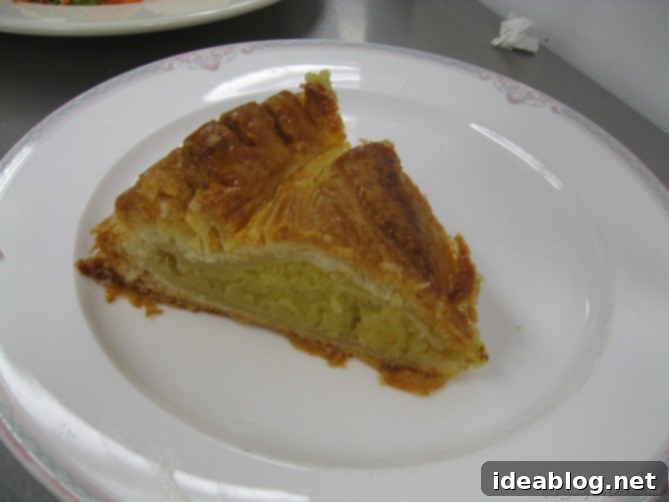
Teamwork, Reflection, and the Culinary School Life
The day was filled with focused activity and collaborative effort, marking my first time working alongside Lindsay, in addition to my regular partner, Hadley. Our team worked seamlessly, completing all our dishes and plating them perfectly on time. The sense of accomplishment and organization at the end of a demanding service is always incredibly rewarding – a true marker of a successful day in the kitchen.
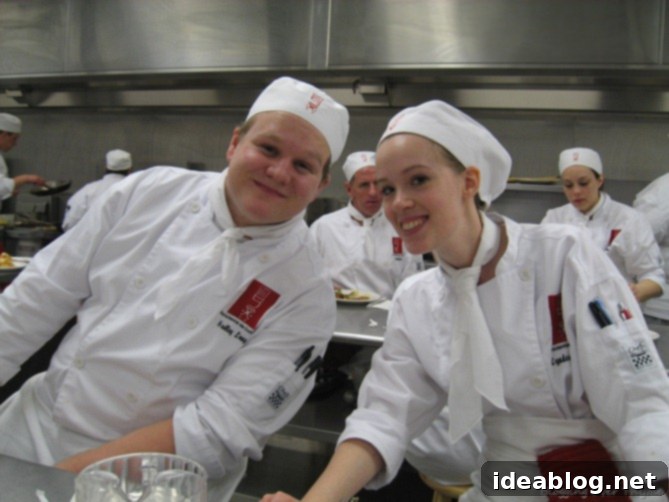
After the thorough cleanup of our stations and the main kitchen, a rare and miraculous event occurred: we had a precious 10-15 minute break to unwind and recharge. Breaks are a luxury in culinary school, often sacrificed for prep or additional practice, so this brief respite was truly cherished before we dove back into the kitchen to begin marinating our ingredients for the following day’s challenging menu.
As you can probably discern, the art of tying a perfect chef’s neckerchief remains a skill I am diligently trying to master! My slightly askew hat and scarf in the post-service photo are clear indicators of a long, productive day, and perhaps a moment of playful abandon after a successful session.
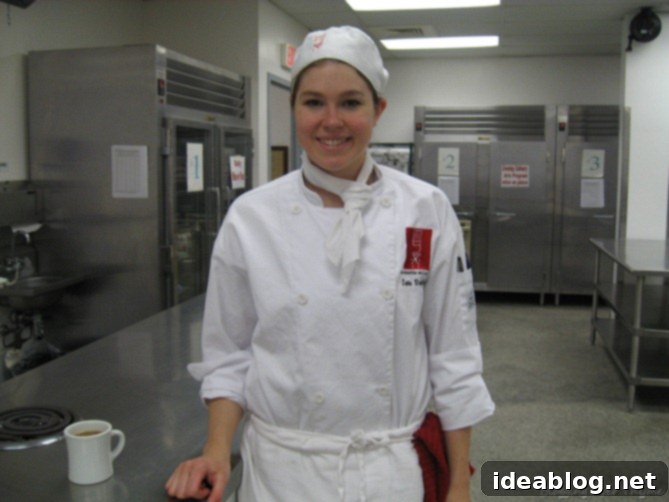
During our brief moment of downtime, Hadley, Tasha, and I found a little amusement reflecting in the demonstration table mirrors. Tasha’s spirited pose, with her leg playfully kicked up, captures the joyful camaraderie and the shared experience of learning and growing together in this intense culinary environment. These small, lighthearted moments are as much a part of the culinary school journey as the rigorous techniques and demanding schedules.
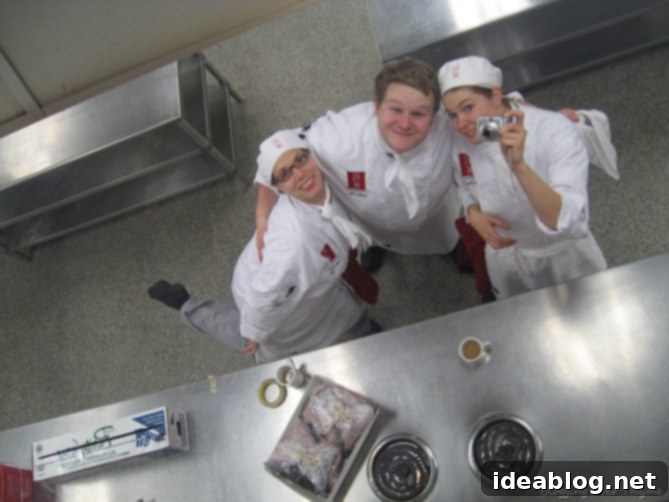
Upon arriving home, I promptly and unintentionally succumbed to a delightful couch crash for several hours, a testament to the physical and mental demands of a culinary school day. My evening concluded with a relaxed dinner at my apartment, sharing stories and laughter with my parents, who had just returned home from their trip to England. It was the perfect end to a day filled with learning, creation, and a deep appreciation for the culinary arts.
I’ll be back very soon with my final update for Week 5 – it’s incredible how quickly time flies when you’re immersed in such a passionate pursuit!
